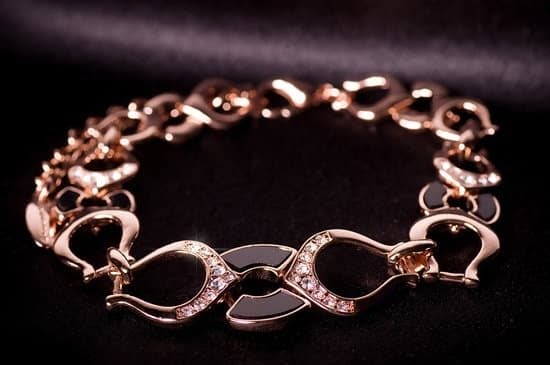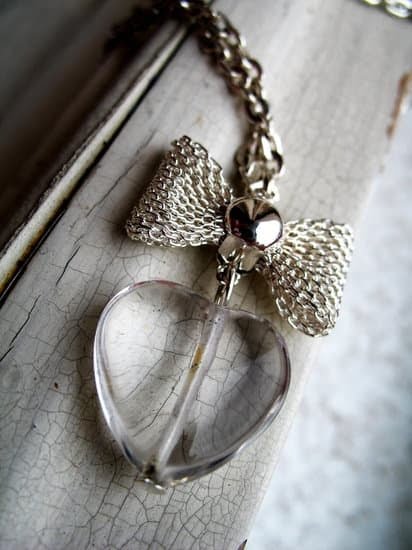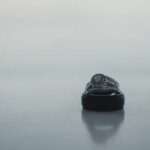Introduction
Testing the purity of gold jewelry is an important part of owning and wearing it. Gold jewelry itself can be prone to toxins, rust, and other corrosive elements that can easily reduce its life span and cause potential damage to the wearer. Additionally, it is possible for unscrupulous sellers to produce counterfeit pieces that contain low levels of gold or simply not contain any at all. For these reasons, it is essential that you test the purity of your gold jewelry before wearing it or buying it from another source. There are a variety of ways you can do this including using tools such as XRF machines and acid testing kits.
Testing with an XRF Machine:
X-ray Fluorescence (XRF) is one way to test the purity of your gold jewelry. An XRF machine works by firing a beam of X-rays into the material being analyzed and collecting data based on how much energy is absorbed and released throughout each process. From this data, an operator can determine the composition of the material including different impurities found in the sample such as other metals like copper, nickel, lead or zinc. This method is also non-destructive, meaning no damage will occur to your valuable piece during testing.
Testing with Acid Testing Kits:
Acid testing kits are easy-to-use but less precise tests to verify how pure your gold is over time. Traditionally used when selling large amounts of jewelry, a set would usually come in three separate bottles; each color representing a specific carat weight – yellow representing 10K gold, red 14K, green 18K and so on– with an accompanying file depth gauge which indicates if a scratch leaves behind an appropriate depth marking for each karat quality. To use this tester correctly requires practice; however most kits detail instructions for new users in order to ensure accurate readings are attained every time..
Types of Gold Jewelry and their Various Purity Levels
Gold jewelry comes in many varieties, with different levels of purity depending upon the type. Three of the most popular and widely used purities are 14k gold (58.5% pure gold), 18k gold (75% pure gold), and 24k gold (99.9% pure gold).
14K Gold: As mentioned above, this is the most common form of gold jewelry and is made from 58.5% pure gold as well as other metals such as silver and/or copper to make it harder and more durable for everyday wear and tear. Jewelry made from 14k gold will usually have a bright yellow color and be stamped with the number 14 on whatever piece you buy – usually seen at the clasp or near a signature inside the band or setting.
18K Gold: Jewelry made from 18k gold is much rarer than its counterpart, being 75% pure gold, as well as other metals such as silver and/or copper to give it durability. Due to its higher level of purity, it is more expensive than 14k jewelry but has a much brighter yellow hue then what you’d find in 14K jewelry. You can often spot an site that offers 18 karat by looking for the stamp with “750″ or “18K”.
24K Gold: This is by far one of the purest forms of all types of Gold Jewelry with a whopping 99%. It contains virtually no other metals at all besides just pure solidified precious metal which gives it great shine, but makes it extremely fragile so can’t handle any kind of wear or stress that would come along with regular use throughout everyday life. Therefore, 24k jewelry should be used solely for special occasions or for collections only- for display rather than wear-ability!! When purchasing this type of jewelry look out for 9999 stamped onto it – which represents its extremely high percentage of purity – 24 karats!
To test the purity levels on each type of jewelry mentioned above you can take take your item to a local jeweler who should be able to perform acid tests necessary to determine exact amount of karats present in your particular piece!
Simple Tools Needed to Test Gold Jewelry Purity
One of the simplest tools to use when testing gold jewelry for purity is a touchstone test, a method which has been used in jewelry stores and shops all over the world. This process requires rubbing the gold piece against a special flat stone, leaving behind a black mark or streak. The type of black mark or streak left on the stone will determine if it is pure or not. A strong yellow streak indicates that it is gold with some alloy material, while a green streak means the presence of silver or copper. If an orange hue is present, this can indicate that there are other metals such as platinum in your jewelry piece.
Another tool used to test gold jewelry’s purity is acid testing. With this method one applies dilute nitric acid to the surface of each piece and then observes whether it leaves a permanent scratch or not; this often only works for higher carat items (rather than those made from low-grade gold) as lower carat pieces may contain other alloys which will resist being scratched by acid. Lastly, investing in an electronic gold tester may be helpful as these come with magnets that detect specific types of nonferrous metal such as gold and silver; this technique works best for hallmarked items as well as highly polished ones with fewer alloys added to them.
How to Determine the Origin of Gold Jewelry
When it comes to gold jewelry, it’s important to determine the origin and purity of the item in order to ensure that you’re purchasing a quality piece. Check for hallmarks on the jewelry itself which will let you know who originally made it. It may also say from which country it was made. To determine the purity of gold jewelry, visual inspection alone is not sufficient. Gold can often be mixed with other metals such as copper or nickel, changing its color slightly but still making it appear as gold. Therefore, an acid test must be done in order to verify its authenticity and exact composition. Conducting an acid test involves using a special acid solution to see if the item is actually pure gold or has been mixed with some other metals as mentioned before. For example, if the metal reacts negatively towards the acid test then it could potentially be silver or even white gold due to its higher levels of zinc. Additionally, you’ll want to make sure any certification backs up what the hallmarks indicate; modern jewelry sellers should generally provide such documentation along with their pieces.
Step-by-Step Instructions for Acid Test to Check for Gold Purity
1. Prepare the following materials before starting the acid test – pure gold sample, nitric acid, and hydrochloric acid.
2. Start by creating a small scratch on the piece of jewelry you are testing with the gold standard (sample). This should reveal both colors in the sample and on your jewelry.
3. Put a drop of nitric acid on each surface. Gold is not affected by nitric acid so if there is no reaction, then it confirms that your jewelry is made of real gold. However, if the jeweler’s alloy contains base metals such as copper or silver, then it will be affected by this acid test and react to create discoloration on the surface.
4. The second test requires dropping a few drops of hydrochloricacid onto the metal surface and observing for any changes over time – such as bubbling or discoloration on the metal’s surface. Gold is resistant to hydrochloric acid so if there are no visible signs of change then this confirms that your piece of jewelry is indeed made out of real gold with no base metals present in its composition..
5. Finally, compare the results from both tests with your reference—the appearance (color) and reaction (discoloration/bubbling) should match when using both nitric acid and hydrochloric acid if real gold is present in your jewelry piece! If these all match up then you can be confident that your jewelry has passed this purity test!
Digital Scales for Accurate Measurement of Gold Weight
Digital scales are a quick and easy way to measure the purity of gold jewelry. They provide more accurate results than manual scales and allow you to instantly measure the gold weight by simply inputting your desired measurements into the digital display. The accuracy of digital scales can also be calibrated using specific weights, ensuring that you get consistent readings each time. Digital scales also often have multiple weighing units for a convenient comparison of different items being measured. This allows one to weigh multiple pieces of jewelry at once in order to determine which is purest or has the most amount of gold content. Through their accuracy and convenience, digital scales make it easier to test gold jewelry for its purity and overall composition.
How to Determine the Concentration of Gold Carats
There are several ways to test the purity of gold jewelry and determine its carat concentration. The most common method is to perform an acid test, wherein various acids with specific gravities (the ranking system for gold purity) are applied to the item in question. If the characteristic reaction is attained, the percent of purity can be better determined. It is important to note that while performing this acid testing method, it is best advised to do so under professional supervision due to its potential dangers.
Other means by which one can gauge their gold’s composition includes examining its hallmark or stamps, both found on any item containing more than 1 carat of gold. In some countries, especially in Europe, stamps such as 375K and 758K are found on pieces indicating a 9-karat (37.5%) and 18-karat (75%), respectively composition of pure-gold with respect to other alloy metals affixed in combination. This can prove critical when assessing how much money one could potentially receive if they later consider selling their piece of jewelry.
Finally, a third way in which one can pretest for a more accurate estimation regarding the karat rating and overall monetary worth, is by employing modern instruments such as our latest XD XRF Analyzers for rapid an effective non-destructive results as legally certified and accepted worldwide in locations such as pawnshops and jewelry retailers/stores alike. Thereby taking any guesswork out from certain entities that might look to take advantage unknowing customers trying to ascertain the true quality of their gold piece(s).
Explanation of How to Read the Scale of Gold Concentration
The purity of gold jewelry can be tested by looking at the karat, or carat system. The karat, or carat is a form of measurement for gold—it tells you how much real or pure gold is present in the object. Karats simply tell you the percentage of gold content per piece of jewelry. A higher karats means more gold in the item and fewer alloys, if any. 24K is considered 100% pure or fine gold and 10k would have 41.7% or less of pure gold content. The other alloy materials that make up a solution can be copper, silver and nickel which can change the color of the original gold hue.
Understanding the scale for measuring purity will make testing easier and quicker when deciding what kind of metal you are dealing with. There are nine different carats listed below (from highest to lowest):
• 24k: Pure Gold
• 22k: 91.7% Gold with 8.3% Alloy
• 18k: 75% Gold with 25% Alloy
• 14k: 58.5% Gold with 41.5% Alloy
• 12k: 50% Gold with 50% Alloy
• 10k: 41.7% Gold with 59.3 % Alloy
• 9k: 35%-37% Gold with 63%-65 % Alloy
• 8k: 33&3/4g -30&1/4g GX63-67AX
• 6k<20g GX50AX : 20%-22&1/2G GX75AXKnowing this scale will help you determine what kind of metal you are seeing when looking at an item's label be it a ring, necklace, bracelet, etc
Tips for Identifying Real Gold Jewelry Markings
When testing the purity of gold jewelry, there are several methods you can use to accurately check if the item is real. First, a visual inspection of the piece is important. Check for distinguishing markings such as karats or hallmarks on the item that indicate its authenticity. These markings can be used to determine what stamp or alloy grade the gold piece is made from and can also provide clues about its origin.
In addition to identifying markings, you may want to utilize an acid test which uses nitric acid as a chemical indicator. This is done by making minor etchings on the jewelry surface – typically up to four digs per sample – and using a dropper bottle containing two parts nitric acid to one part water for visualization verification. A blue-greenish color indicates a higher level of purity, while black indicates lesser levels of purity. It’s important to note, however, that this test should not be conducted on items inlaid with stones, as it could damage the setting and jewel pieces themselves. Furthermore, as this method requires dropping liquids onto your item of jewelry, it’s recommended that you wear safety gear such as goggles and gloves when conducting any tests involving contact with harsh materials.
Finally, there’s electro-chemical testing which requires specialized equipment in order to properly measure the quantity of gold elements in each sample item; this too is used for validation purposes when seeking out real gold jewelry pieces and accurately determining their value. With these tips in mind, you can now confidently assess whether a piece of jewelry is truly made from gold or simply imitations passing off as solidified metal masterspieces!
Guidelines for Examining Gold Jewelry
When examining gold jewelry for purity, there are several simple steps one can take to ensure the accuracy of their findings.
First and foremost, you should look for a stamp on the piece that indicates not only the purity of the metal but also the origin. A hallmark is used by many countries for items made out of precious metals to indicate origin and quality – this may appear as a series of letters or symbols. If no hallmark is present, analyze cautiously as it may not be real gold at all.
Next, use a magnifying glass to get a better view of any signs that may hint at different metals being combined in the alloy. Generally, if more than one metal has been alloyed together, then there will be variations in color or grain structure visible under magnification. A quick test with a magnet can indicate if steel or iron impurities are present – true gold will not be attracted by a magnet whereas cheaper metals could be pulled towards it.
Finally, if you still need confirmation after performing these visual tests, contact an experienced jeweler who can use specialized equipment such as acid testing or electronic testers to accurately determine the quality of your gold pieces.
Reflection
Testing the purity of gold jewelry is an important step before buying or selling it. Gold has been a highly sought-after material in different cultures for centuries, and with its rising value, it is more important than ever to verify the purity of your gold jewelry. Knowing the percentage of pure gold in your jewelry helps you to determine its value when you are ready to sell or trade it, so it is important that this step does not go overlooked.
To begin testing the purity of one’s gold jewelry, start by obtaining a valid Jewelers’ loupe which will magnify any tiny number on engraved on the piece. If using acid, you must obtain an acid testing kit specifically designed for gold which include nitric and hydrochloric acid, as well as neutralizers such as baking soda and distilled water. Gently scrape a small portion of the inside area of your gold with a file (to avoid visible damage) and apply a few drops of either nitric or hydrochloric acid to identify which one will react with your gold sample. The identifier will indicate degrees (Karat values ranging from 8K-24K) after being reacted by either acid type; Simply write down these degrees for comparison purposes later and clean the piece afterwards with distilled water or baking soda soaked in a cotton cloth or Q-tip. Finally, use a scale to measure out grams according to karat weight marking typically located on the inside portion of rings or other fashion accessories; if all matches up then congratulations! You now know how pure your gold is.
Ensuring the purity of your gold jewelry guarantees an accurate investment value when selling or trading it in for something else; this also shows that you knowledgeable enough about its quality ,and others who seek to purchase from you can trust that they are getting exactly what they paid for . Furthermore, when accurate purity measurements are taken during evaluations prior to any sale/trade transaction there can be little disagreement between both parties ; allowing them to have peace of mind knowing that their investments have been properly secured.
Conclusion
Testing the purity of gold jewelry is a crucial step to ensure that you are purchasing quality pieces. Familiarizing yourself with the process will help you make informed decisions when shopping and protect your investments down the road. An accredited appraiser can provide a more reliable estimation of a piece’s true value. Additionally, having accurate measurements of each piece’s karatage can help prevent overpaying for an item. Regardless of how a particular test was performed, it is important to remember that even the purest gold can naturally contain trace elements from its formation process. Ultimately, knowing how to test purity of gold jewelry is essential for those who want to play it safe with their investment pieces.

Welcome to my jewelry blog! My name is Sarah and I am the owner of this blog.
I love making jewelry and sharing my creations with others.
So whether you’re someone who loves wearing jewelry yourself or simply enjoys learning about it, be sure to check out my blog for insightful posts on everything related to this exciting topic!





